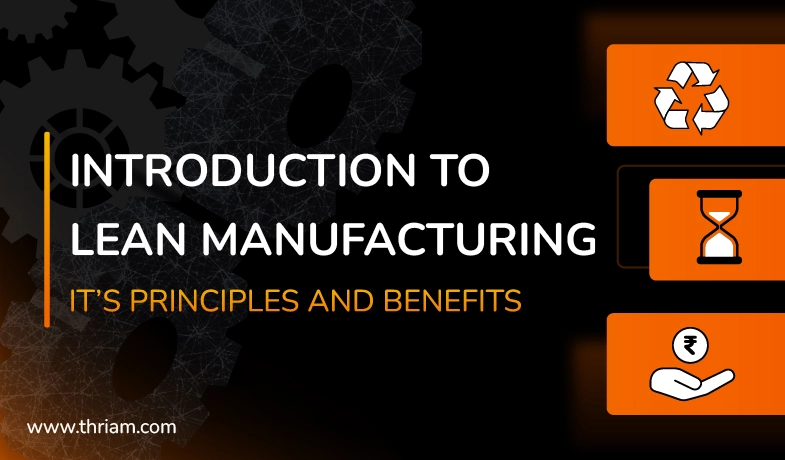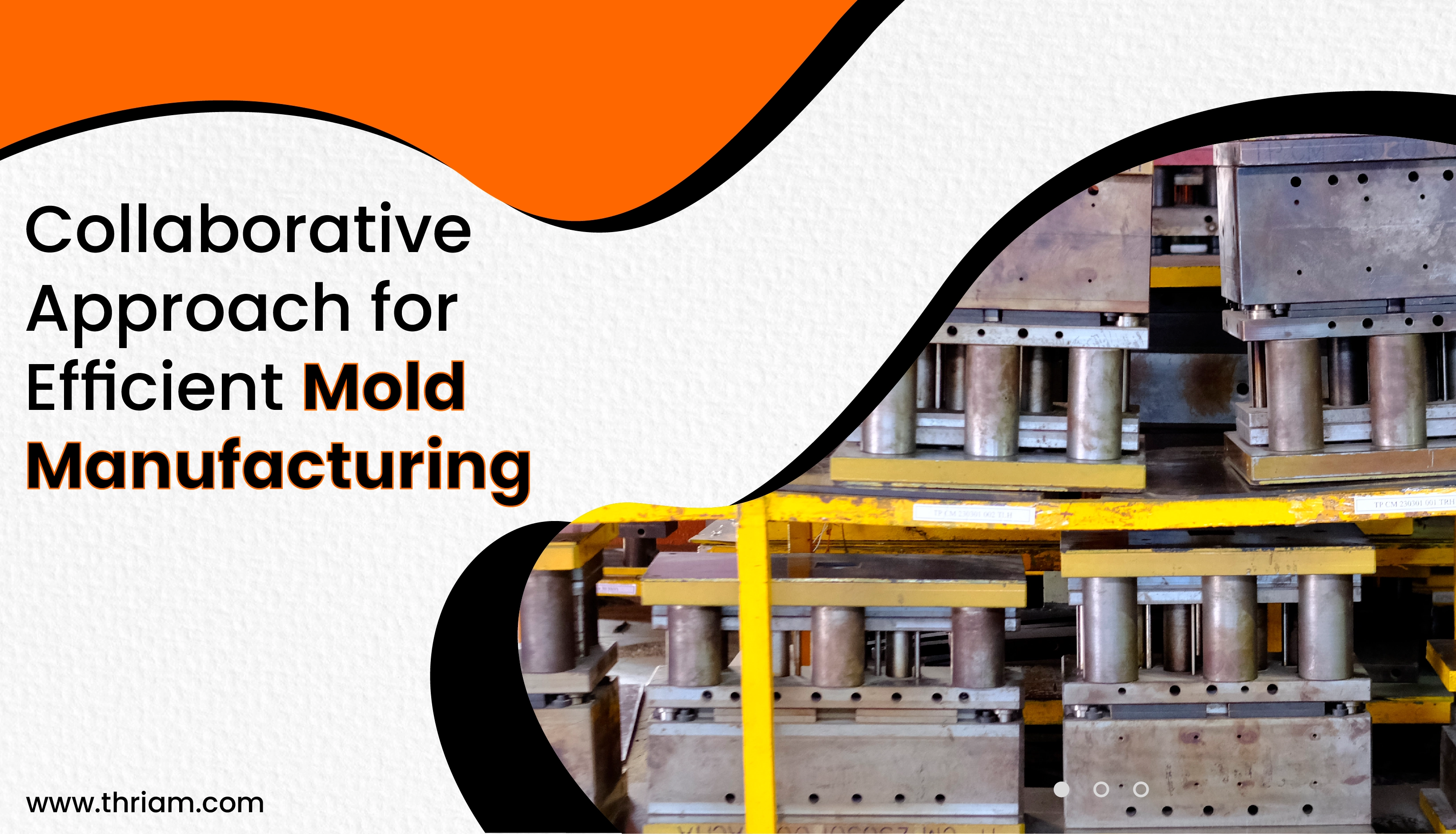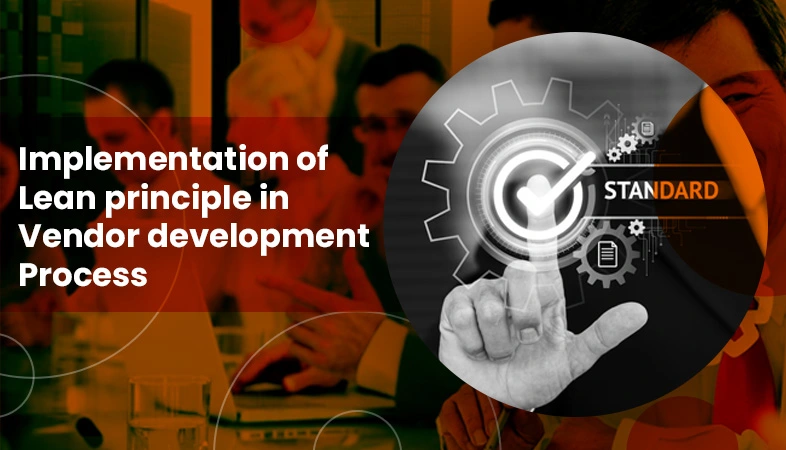Streamlining Efficiency and Quality: How to Implement Lean Manufacturing Principles in Mold Development Processes
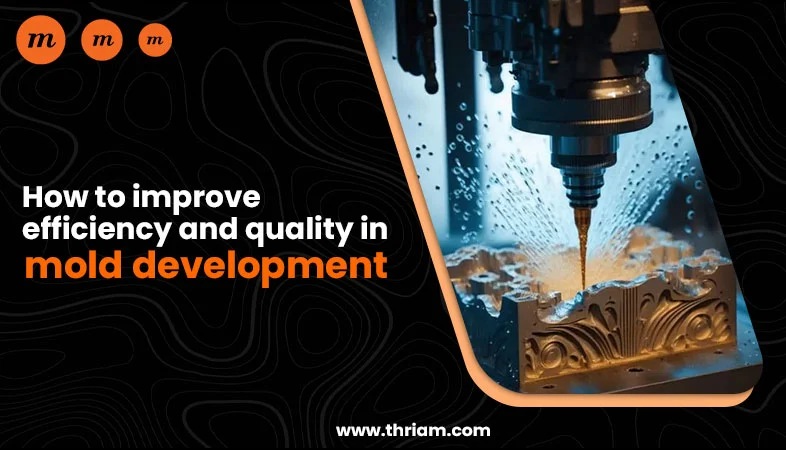
Lean manufacturing principles have gained significant popularity in various industries, including mold development. The application of lean principles can greatly improve efficiency, reduce waste, and enhance overall quality in mold development processes. In this blog, we will explore the key concepts of lean manufacturing and how they can be implemented in mold development processes to achieve optimal results.
Introduction
Lean manufacturing principles focus on eliminating non-value-added activities and streamlining processes to maximize efficiency and minimize waste. In the context of mold development, implementing lean principles can result in shorter lead times, reduced costs, and improved product quality.
What is lean manufacturing?
Lean manufacturing is a systematic approach that aims to optimize efficiency and eliminate waste in manufacturing processes. It originated from the Toyota Production System and has become widely adopted by companies across various industries. The core principle of lean manufacturing revolves around delivering value to customers by minimizing non-value-added activities.
At its core, lean manufacturing focuses on identifying and eliminating waste in all forms. Waste can include unnecessary motion, excess inventory, overproduction, defects, waiting times, and more. By eliminating waste, companies can improve operational efficiency, reduce costs, enhance product quality, and shorten lead times.
Understanding Mold Development Processes
Mold development typically involves several stages, including design, tooling, manufacturing, and validation. However, these processes often face challenges and inefficiencies, such as excessive lead times, high costs, and defects. Implementing lean manufacturing principles can address these issues and improve mold development overall.
Challenges in mold development
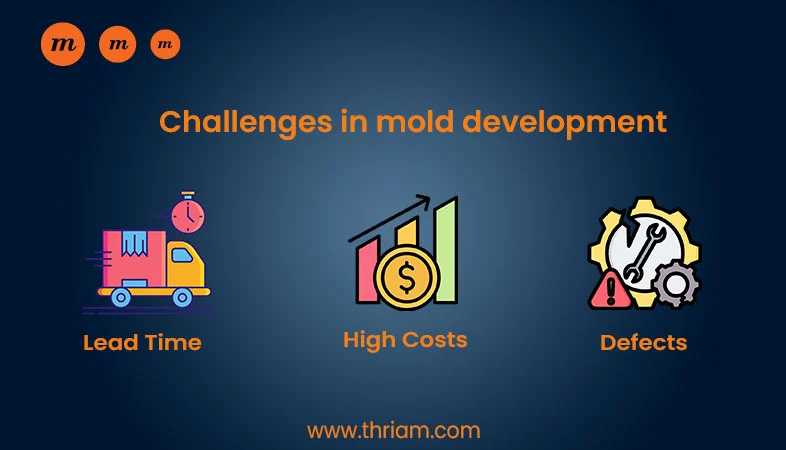
1. Lead Time:
One of the primary challenges in mold development is the lengthy lead time. Designing and fabricating molds can be time-consuming, often taking weeks or even months. This extended lead time can delay production and impact time-to-market for new products. Improving lead time requires optimizing each phase of mold development, from design to fabrication. Utilizing computer-aided design (CAD) tools, employing rapid prototyping techniques, and implementing efficient manufacturing processes can significantly reduce lead time.
2. High Costs:
Mold development can be costly, primarily due to the intricate nature of the process and the high-quality materials required. Designing molds for complex products, sourcing specialized tooling equipment, and testing and debugging all contribute to the overall cost. To mitigate this challenge, manufacturers can explore cost-effective alternatives like utilizing standardized mold components, implementing lean manufacturing principles to eliminate waste and reduce costs, and investing in advanced simulation tools to optimize mold design and performance.
3. Defects:
Another significant challenge in mold development is the occurrence of defects in the final product. Surface imperfections, warping, dimensional inaccuracies, or insufficient part strength can arise due to various factors such as mold design flaws, material issues, or process inefficiencies. To overcome this challenge, comprehensive mold design analysis using simulation tools can help identify potential defects and rectify them before the manufacturing process. Additionally, implementing quality control measures such as inspection and testing can help identify and address defects during and after production.
Key Lean Manufacturing Principles for Mold Development
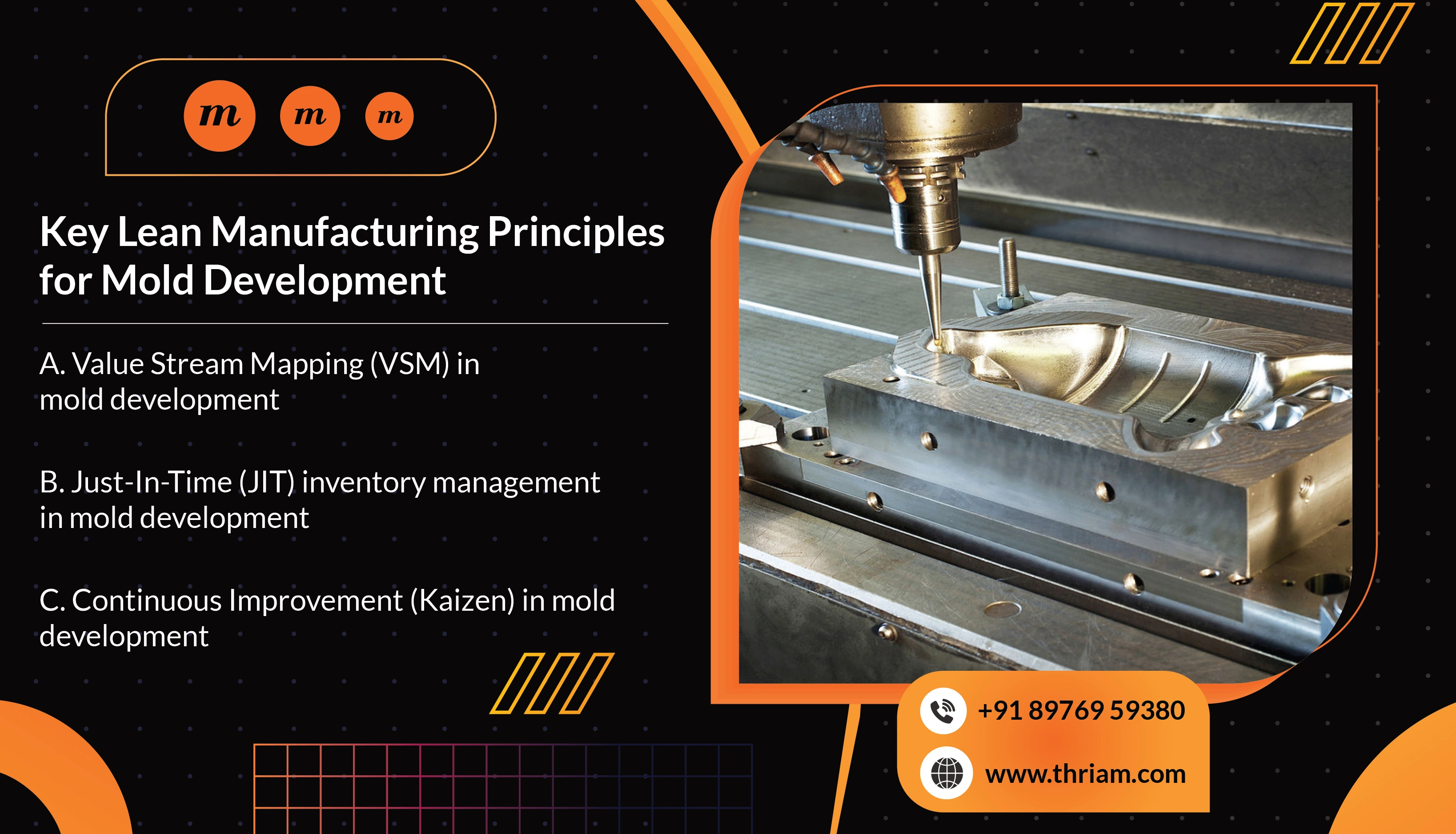
A. Value Stream Mapping (VSM) in mold development
Value Stream Mapping (VSM) is a powerful tool for visualizing and analyzing the flow of materials and information in a process. In mold development, VSM can help identify bottlenecks, non-value-added activities, and opportunities for improvement. By mapping out the current state and designing a future state, mold developers can optimize the entire production process.
B. Just-In-Time (JIT) inventory management in mold development
Just-In-Time (JIT) inventory management aims to minimize inventory levels and ensure materials are delivered at the right time. In mold development, JIT can help reduce inventory costs, improve cash flow, and enable faster response to customer demands. By establishing a reliable supply chain and implementing pull systems, mold developers can effectively manage inventory and achieve greater efficiency.
C. Continuous Improvement (Kaizen) in mold development
Continuous Improvement, often referred to as Kaizen, is a philosophy that encourages incremental improvements in processes and products. In mold development, Kaizen can be applied through various tools and techniques like PDCA (Plan, Do, Check, Act) cycles, Gemba walks, and employee empowerment. By continuously seeking ways to improve mold design, tooling processes, and manufacturing techniques, mold developers can enhance productivity and minimize waste.
Tips for Implementing Lean Manufacturing Principles in Mold Development
To successfully implement lean manufacturing principles in mold development, consider the following tips:
- Create a culture of continuous improvement by encouraging collaboration, innovation, and open communication among all team members.
- Invest in training and educating employees about lean principles, enabling them to actively contribute to the implementation process.
- Monitor and measure the effectiveness of lean implementation in mold development processes to identify areas for improvement and make necessary adjustments.
Conclusion
Implementing lean manufacturing principles in mold development processes can lead to significant improvements in efficiency, cost reduction, and product quality. By applying Value Stream Mapping, Just-In-Time inventory management, and Continuous Improvement techniques, mold developers can streamline their processes, reduce waste, and ultimately deliver better results. Embracing lean principles is a continuous journey that requires commitment, collaboration, and a mindset of constant improvement. Get started on your lean mold development journey today, and experience the benefits firsthand.
Bonus content
Companies using lean manufacturing
General Electric (GE):
GE is another example of a company that has successfully embraced lean manufacturing principles. During its transformation in the late 1990s, GE implemented a lean initiative known as "Work-Out." This initiative aimed to eliminate waste, streamline processes, and promote continuous improvement. By engaging employees at all levels and empowering them to identify and solve problems, GE was able to reduce costs, improve efficiency, and enhance customer value.
Toyota:
Toyota is widely recognized as a pioneer in lean manufacturing. The Toyota Production System, also known as TPS, revolutionized the automotive industry by implementing lean principles. Toyota's focus on reducing waste, improving quality, and empowering employees has made it a global leader in lean manufacturing. By implementing techniques like just-in-time inventory management and continuous improvement, Toyota has achieved remarkable results, including shorter lead times, reduced defects, and increased customer satisfaction.
